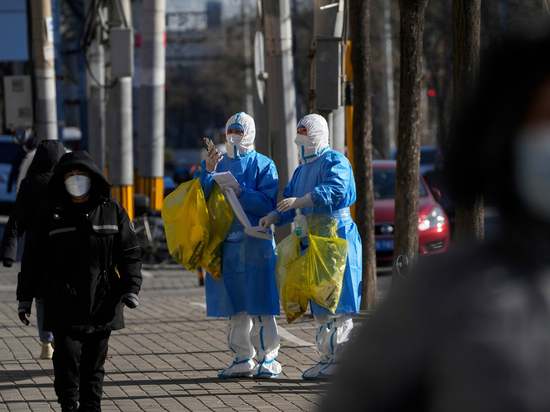Chinese authorities made concessions amid ongoing anti-COVID unrest
[ad_1]

The demonstrations that broke out the other day due to dissatisfaction with the strict “zero COVID” policy in different cities of China seemed to have begun to fade by the middle of the week. Protesters are no longer so actively trying to take to the streets, and statements from the authorities are increasingly being heard about possible relaxations in supervision. Already on Wednesday, Chinese Vice Premier Sun Chunlan announced the country’s “new stage and new mission” in fighting the infection. It is noteworthy that health experts and the Deputy Prime Minister herself in their speeches began to avoid mentioning the “zero tolerance” policy for COVID.
One of China’s top pandemic response officials said the country is entering a “new stage and new mission” in the fight against the infection. Against the backdrop of a long silence from officials and local media, this is a very concrete symbol of the nascent change in the government’s approach to the “COVID zero” policy. And the time for these changes fell precisely on a series of protest actions that swept through the cities.
Vice Premier Sun Chunlan’s statement was reported on Wednesday by China’s Xinhua News Agency. This happened at exactly the moment when several regions, including one of the most actively protesting cities of Shanghai, began to lift the lockdown in place there. This is a bold move given the continued rise in the number of infections. But if the officials themselves began to come to a more benign argumentation, then the situation already seems less acute.
“With the decrease in pathogenicity of the Omicron variant, the increase in vaccination rates, and the accumulation of experience in outbreak control and prevention, the containment of the pandemic in China is facing a new stage and mission,” Sun Chunlan said on Wednesday.
But what influenced her more: mass protests or a round table with health experts that took place the day before? Note that health experts praised China’s efforts in the fight against coronavirus infection. The Deputy Prime Minister listened carefully to all the arguments before making a statement with a proposal to “improve” the current measures. She noted that China is taking a more “humane approach” to its outbreak response steps. It is noteworthy that in her speech, Sun did not say a word about the “zero COVID” policy, focusing only on vaccination and a number of other measures. By the way, the wording “zero COVID” was also avoided by health experts.
The unity of such an “updated” agenda began to seep from the authorities before. In recent days, Chinese officials have begun to emphasize the lesser severity of the Omicron strain. The agenda was reinforced by the state media, where more materials began to be published with calls not to panic about this variant of COVID.
The change in tone comes at the same time as a new senior vaccination campaign was announced on Tuesday. More than 90% of the Chinese population has received at least two doses of the vaccine, but this rate is dropping sharply among the elderly, especially those over 80 years of age.
China reported 36,061 cases on Wednesday, down slightly from Tuesday’s 37,828 cases. Despite relatively high numbers for the country, some districts have begun easing restrictions.
State media reported that on Thursday, 24 districts in Shanghai classified as “high risk” were exempted from restrictive measures. This followed the easing of lockdowns in 11 districts in Guangzhou on Wednesday, despite both cities reporting an increase in infections. The lifting of restrictions meant easing the strict measures against which the protesters opposed.
Made famous by strikes at an iPhone factory, Zhengzhou City has also begun easing restrictions. The city of Chongqing can also be included in the same row.
Hu Xijin, the former editor-in-chief of China’s Global Times, also noticed the sudden change. On his Twitter page, he stated: “China is accelerating the lifting of large-scale lockdowns.”
Analysts say the changes are a clear sign that the government is listening to the protesters, even if it doesn’t publicly acknowledge it.
It is important to remember that China remains the last major country still committed to a strategy to completely eliminate COVID. Even at the beginning of the pandemic, such steps were effective and set an example for other states on how to act in a situation that has not yet been fully studied. And then everything really worked. The uncontrolled transmission of the infection was contained and, accordingly, the death toll was minimized. Especially in comparison with other countries. But more contagious variants of the disease began to emerge, leading to frequent and sudden lockdowns, travel restrictions and related hardships, including food shortages, secondary deaths and economic damage.
The glass of discontent overflowed and poured rivers of protesters into the streets of Chinese cities. In addition to the main reason for the strict restrictions, some rallies also chanted demands for democracy and the rule of law, and in Shanghai for the resignation of the country’s leader Xi Jinping.
One way or another, the authorities went to meet their citizens. And even though there are still cases of police tracking dissatisfied people, a positive shift has begun to be felt. Even at the weekend, such changes were only a mirage.
[ad_2]
Source link








